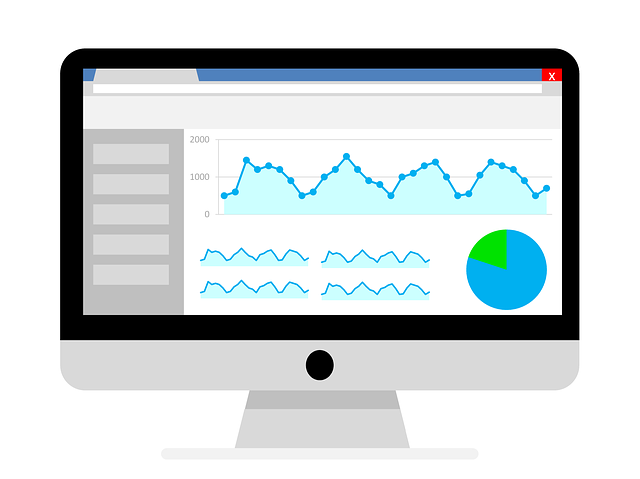Search powered by Funnelback
Much of the twenty-first century has been spent marveling at our capacity for data collection and storage. In 2018, many are finally starting to ask: to what end?
As the attention span of millennials and Gen Z diminish and demands for high-quality information grow, higher education will be forced to adapt and finally make use of the data it has collected for well over a decade. Some first began the transition in 2008, as the Obama campaign demonstrated a sophisticated grasp of then-modern analytics techniques in a non-corporate environment. Still others are just starting the process of collecting and interpreting their data.

New analytics platforms provide clarity and insights to data that has languished on dusty servers and file cabinets for years, shifting strategies for recruitment, retention and engagement significantly. In 2018, much of higher education will finally take the leap, moving aggressively to make better use of long-held data.
Incubated at the Australian National University, the Funnelback team boasts decades of higher education experience and expertise. In conversations, shared research projects, and in ongoing collaborations with our Higher Education partners, we’ve learned a great deal about where the world is headed with its data.
Here are some of the things our Higher Education partners say that they’ll be watching in 2018:
Worth it
Students are increasingly demanding measurable value for their dollar, and higher ed is responding. Many institutions are working across silos to reassure prospects and motivate alumni to donate. These strategies seem especially profitable when institutions share alumni success stories with prospects. Other institutions are already starting to demonstrate “educational ROI” through sophisticated, publicly reported dashboards, with contents driven by search analytics.
Optimizing student & alumni outreach
Universities are collecting data "in really kind of remarkable quantities," says Richard DeMillo, executive director of Georgia Institute of Technology's Center for 21st Century Universities. However, too many don’t make effective use of this knowledge repository. In 2018, we expect to see an increase in institutions using this data to precision-target prospects, existing students, and alumni, providing new avenues for engagement. This activity can boost target application rates, student success, and alumni engagement. Cross-pollination can mean that interested prospects learn about successful alumni, alumni learn about exciting student research, and students gain an edge for their success.
Quality over quantity
With enrolment declines seemingly plateauing after a multi-year fall, many institutions are starting - or renewing - a conversation about bringing in more quality applicants and not just applicants overall. This means more targeted outreach efforts and a fierce new kind of competition as new campaigns target the highest-quality applicants.
Text killed the video star
Quality content is more important than ever. Students, inundated with information and increasingly unwilling to stay for boring on low-quality content, are finding new ways to ignore marketing materials. The trend toward greater video content won’t stop - after all, nearly two-thirds of potential students are on YouTube every month. But strategic, quality content will increasingly trump a multitude of videos on platforms like Snapchat, Facebook, Twitter, Instagram, Pinterest or YouTube.
The trend toward ever more videos won’t stop. But strategic, quality content will increasingly trump video.
In 2017, 64% of college prospects said they preferred to consume college web content through text and not video. And search platforms have diminished the traditional impact of SEO, focusing instead on perceived quality. Institutions will respond to this finding with not more but better-targeted, higher-quality content - and not just video.
Programs > Universities
Be mindful of your digital presence, especially if it’s siloed across programs and schools. How many domains belong to the University and its various programs and schools? Institutions report more and more searches for specific programs, not school name. If a prospect’s first point of entry isn’t your primary landing page or site, how is your message getting through? Can visitors easily get to your primary site or landing page? More than just taking over independently-managed pages, this is an opportunity to offer services that unify your content without squashing separate brands or the independence of certain programs.
Micro-moments
These moments in time - quick internet searches or decisions - can make or break a decision to apply. Research, purchase, or opt-in micro-moments are increasingly driving content. To really succeed with micro-moments will require "deeper demographic research and a mobile-intensive strategy," according to Jayson DeMers at Forbes. But there's a simpler way to get at micro-moments. What comes up when a prospect searches for “tuition for National Park College” or “study abroad at NYU”? Students are looking for answers in the moment. If it takes more than a few moments, you’ve lost them. ("Rich results" on search engines are a big part of this trend.)

Will we see a more effective use of data by December 2018? For some universities, connecting siloed data is just beginning. For others, unifying solutions like Funnelback search have already connected diverse datasets to help draw better insights and provide greater access to critical data.
Already-stretched marketing and IT budgets entering 2018 will continue to be challenged to find ways to cut costs while facing growing pressures from millennials and Gen Z to provide higher-quality content. Will the benefits and insights from unified data drive more effective recruitment, retention and alumni relations? Will higher ed marketing finally make use of institutional data to drive revenue instead of data storage costs?
Download the eBook
Our team has produced an in-depth ebook on Higher Education in 2018. Download it here.




